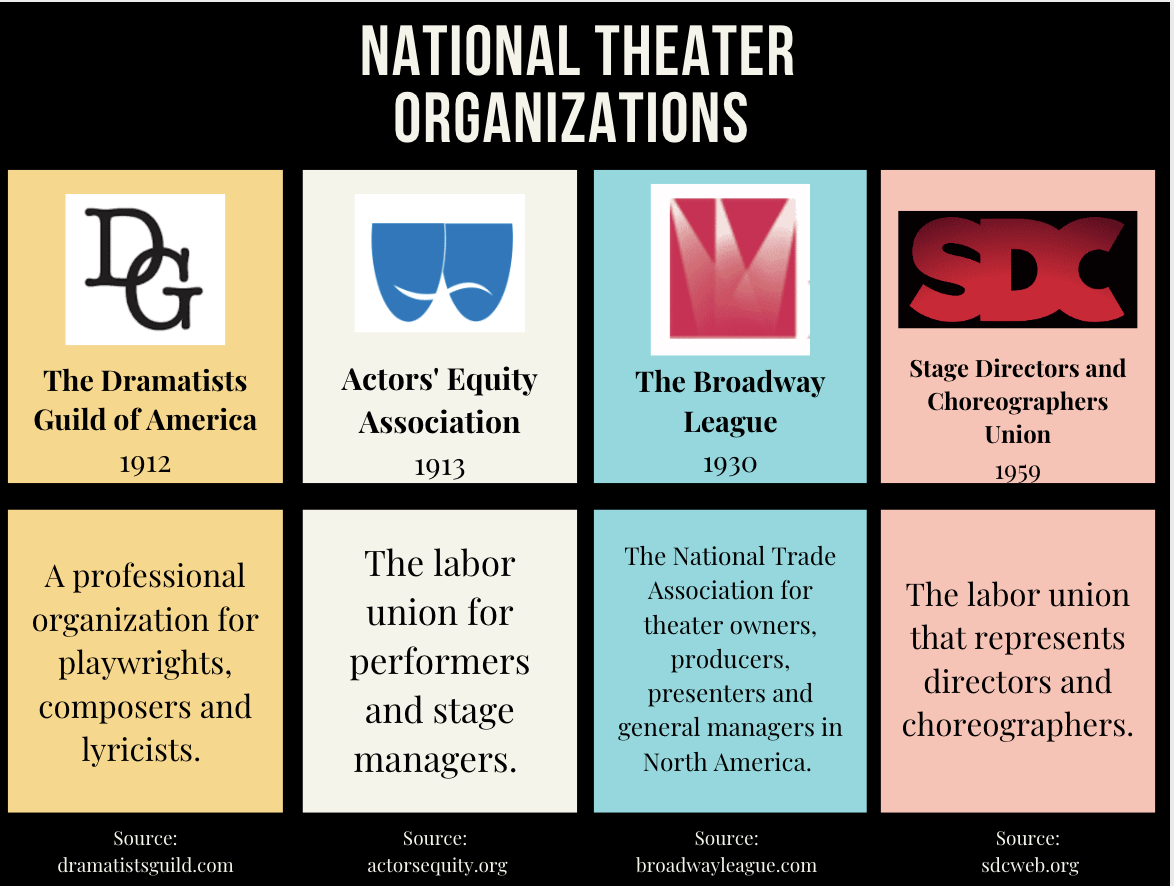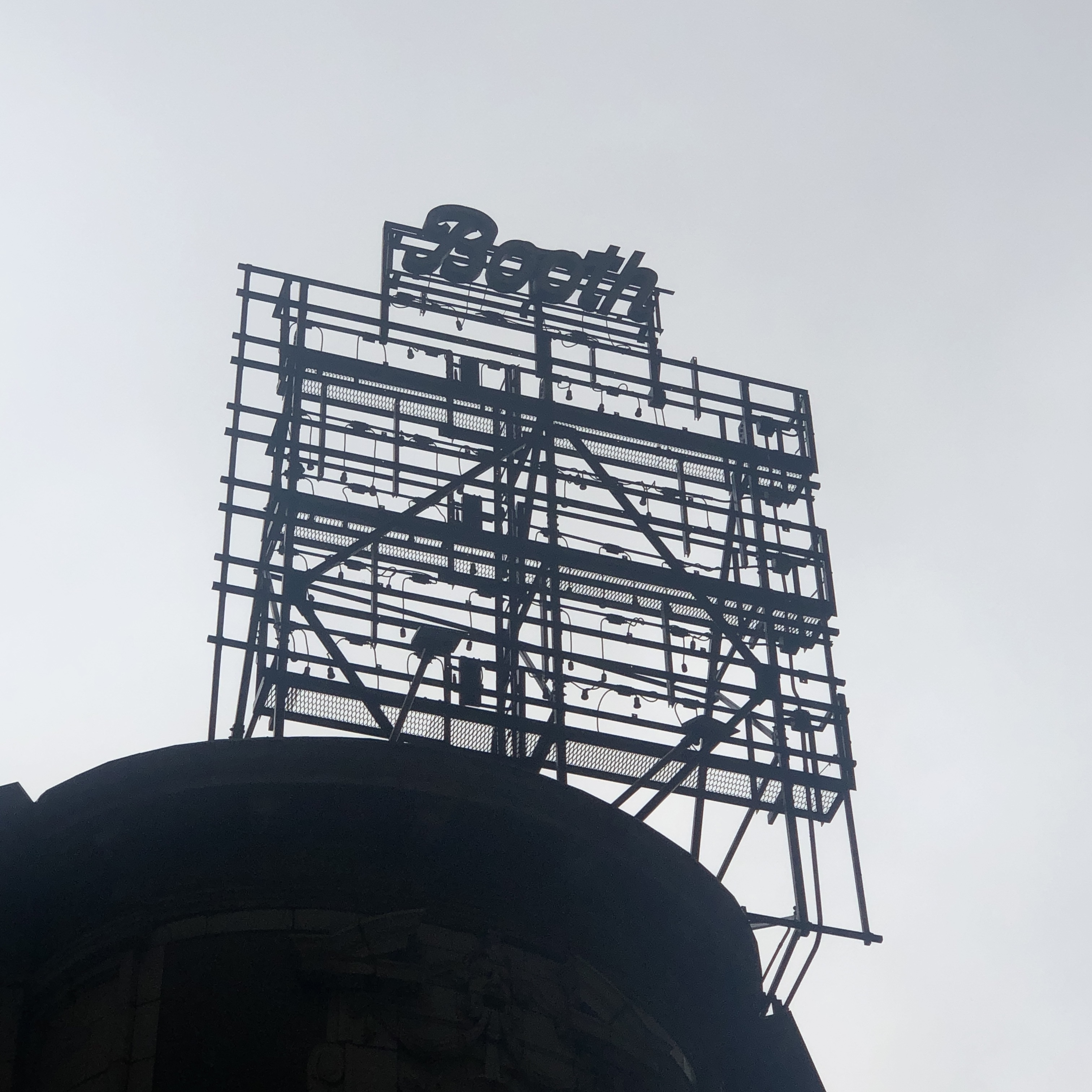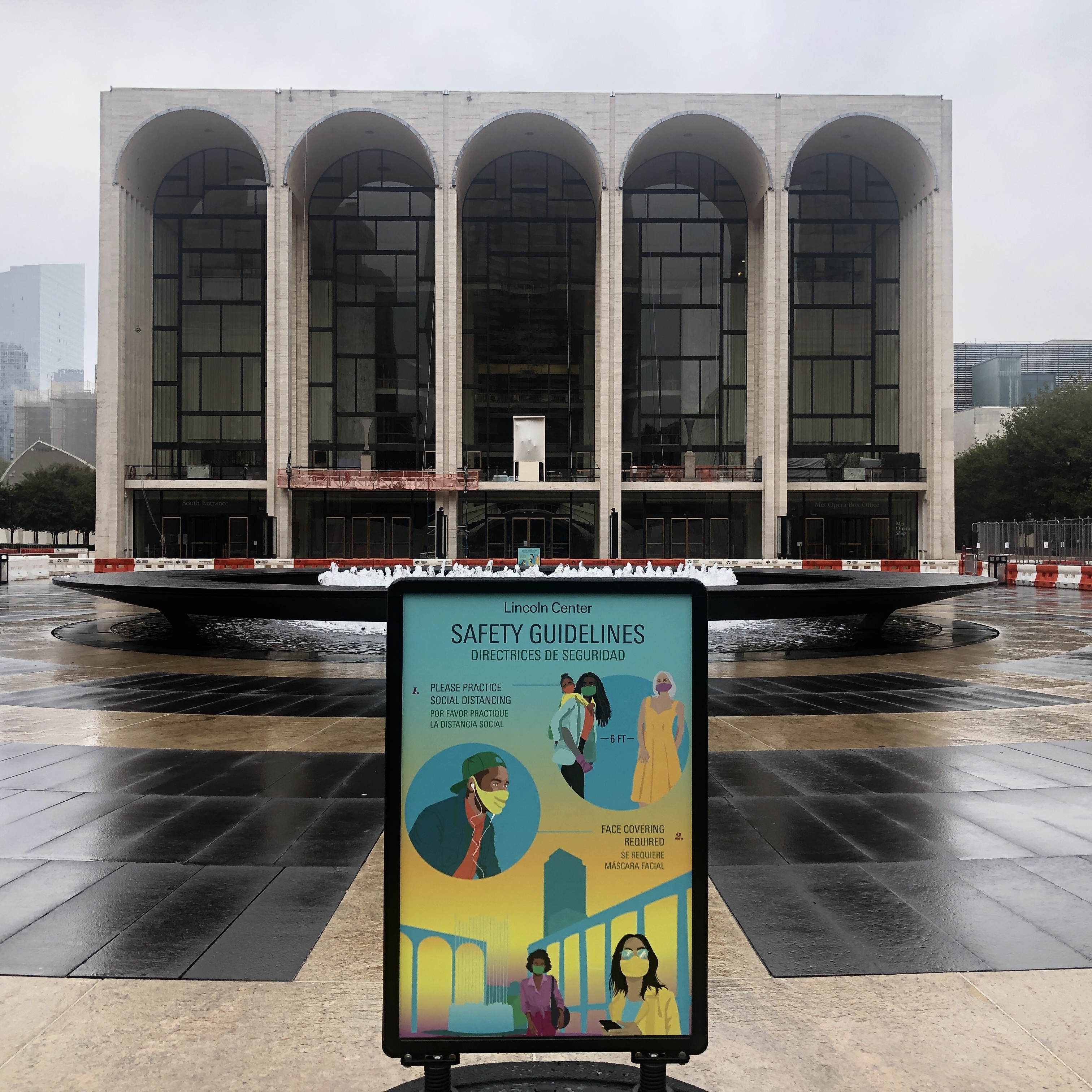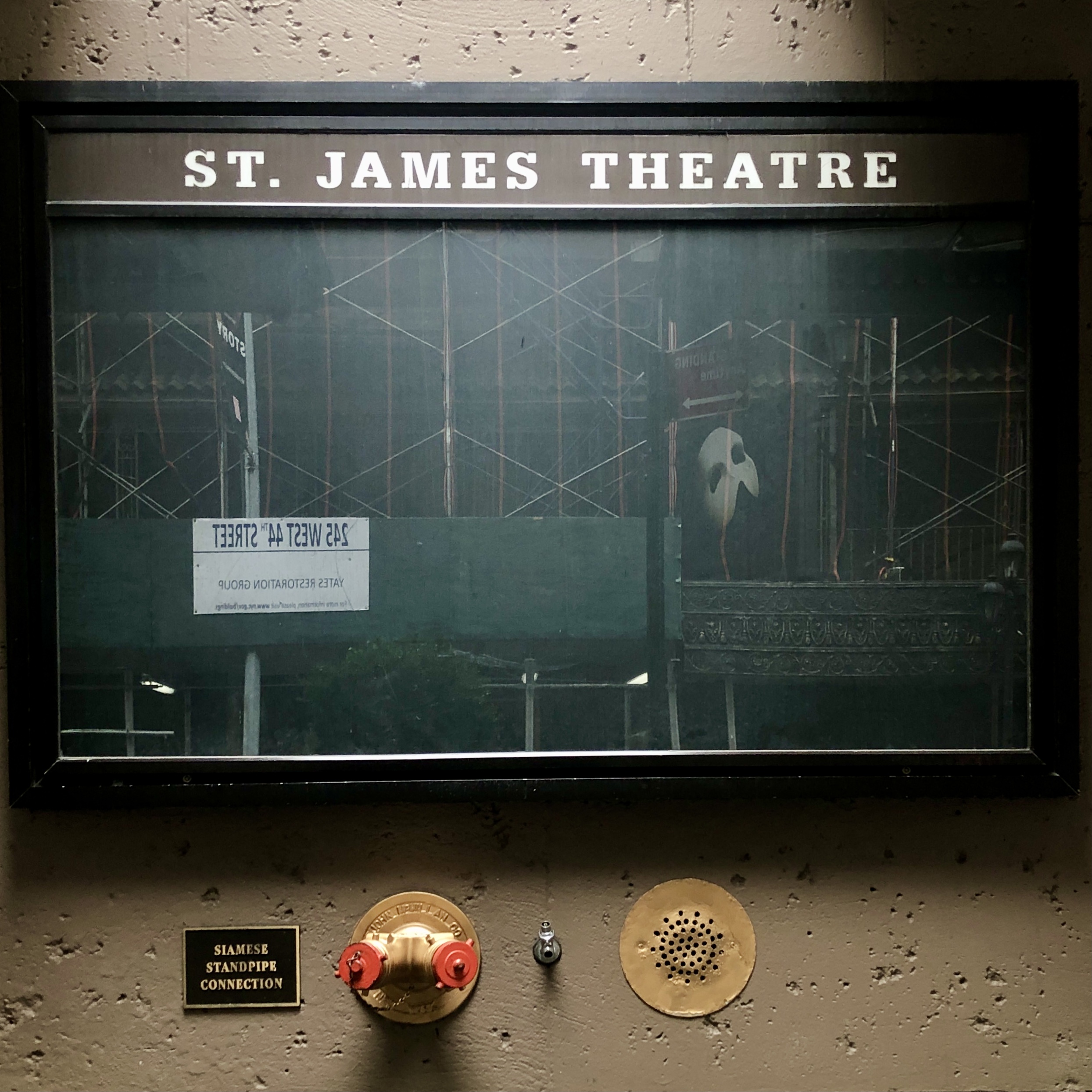Theater artists and professionals weigh in on the impact of the COVID-19 pandemic and the state of the industry.
By Jessica Doherty
A year ago, David Adjmi was working on the workshop production of his play, “Stereophonic” at Second Stage Theatre. Over the next year, it was planned to run at Center Theatre Group’s Mark Taper Forum and then move to Broadway in the spring.
“I had been working on this play for eight years, so it was a long time coming,” Adjmi said.
But the COVID-19 pandemic derailed these long-awaited plans.
On March 12, 2020, Broadway productions went dark. What was supposed to be just a 32-day pause — the longest consecutive shutdown in its history — is expected to last at least 444 days.
Theater is a famously resilient art form, often occurring despite government censorship and with the sparest of resources (trust me, there are plays about it). But theater is up against an unprecedented challenger — a raging pandemic along with state and local health regulations that have prevented large, indoor gatherings.
A lack of federal assistance, combined with pre-existing socio-economic barriers of entry, have caused challenges for an industry that provides nearly 100,000 full-time jobs to New York City, according to New York Senator Chuck Schumer.
But what are those 100,000 theater employees, and others like them nationwide, to do when they cannot work for over a year?
Theater’s Past and Present...
“[Theater] has existed for a long time, [it] has outlasted the inquisition,” said Melinda Finberg, an associate professor of theater practice at the University of Southern California. “It will be back.”
“[Theater] has existed for a long time, [it] has outlasted the inquisition, it will be back.”
— Professor Melinda Finberg
History can put the pandemic into perspective. Finberg cited several historical examples: Greek dramas were staged even during times of war in outdoor venues. During the Black Plague in the 1600s, Finberg said London underwent a form of lockdown, but eventually the theater returned. Some theaters stayed open for a while, but eventually closed.
The most applicable historical parallel may be the 1918 Flu outbreak, which did not shut down Broadway. While theaters closed for labor strikes and the Actors’ Equity Association negotiations, Broadway was otherwise operational. Audiences declined briefly and smaller, regional theaters closed temporarily.
Economically, experts have compared the economic impact of the COVID-19 pandemic to the 2008 recession and the Great Depression, although some studies argue that the latter comparison is only applicable to the initial impact of the COVID-19 pandemic and not its prolonged effects. Unemployment in April 2020 reached 14.7%, the highest rate since the Great Depression. A Columbia University study found that nearly the nationwide monthly poverty rate also rose to 16.7% in Sept. 2020.
In the 1930s, theater and the performing arts had federal support during the national economic crisis. The Federal Theatre Project paid actors and artists to continue their careers. At its height, the project employed nearly 13,000 artists.
More than eight decades later, the industry hoped for federal assistance for the arts again.
The CARES Act passed on March 27 and provided over $2 trillion in federal assistance to individuals and businesses impacted by the pandemic — including actors and theater artists. But it is set to expire on Dec. 26.
The latest federal assistance could be the Heroes Act which would provide $10 billion to independent live venue operators and another round of stimulus checks to unemployed individuals.
But even after the first round of stimulus checks, some feared that a $1200 check is not enough for individuals to survive — especially in a city as expensive as New York City.
“New York...for better or for worse, is the epicenter of [theater] and it’s a very expensive city to live in, ” said Adjmi, who is based in New York City. “So when you add COVID[-19]...it destabilizes it.”

And uncertainties over health care coverage have deepened during the theater’s long dark period.
Due to financial strain from the pandemic, actors and stagehands will now need to work for 16 weeks to qualify for six months of coverage after Jan. 1 — a virtual impossibility given current shutdowns.
“My heart breaks for everyone who works on Broadway or depends on it to make their living,” Mary McColl, the executive director of Actors’ Equity Association said in a press release.
“I think the effect of [the pandemic] is multi-pronged,” Adjmi said. “On the one hand, it’s just incredibly depressing to feel you’re barred from your livelihood and your art form that is contingent upon people getting together in a shared space.”
A poster outside the Majestic Theatre (Photo by Jessica Doherty).
...And Its Future
“I think everyone is concerned about the state of the industry,” said Lisa Portes, a board member of the Stage Directors and Choreographers Society. She is also the head of directing at The Theatre School at DePaul University. “But not like, ‘I’m not going to be in the industry,’ but ‘What am I going to do to survive until the industry comes back?’”
Some younger artists are worried as well.
Cameron King spent her junior year of Carnegie Mellon’s directing program in London, studying at the London Academy of Music and Dramatic Arts and shadowing the director of the West End production, “The Prince of Egypt.”
“I was just seeing that literally $12 million production come to life, which was incredible,” King said. “I got to see it through opening and then it just shut down.”
King has since returned to the United States, uncertain if “The Prince of Egypt” will reopen or if she will be able to find another big break in the theater industry anytime soon.
“I feel so lucky to be the age that I am now,” King said. “If I was [older] I don’t know if I would have the stamina to return [to theater].”
But recent graduates face their own struggles.
“It feels like I graduated and the industry I want to be involved in doesn’t exist,” Quincy Confoy, a recent theatre graduate from Brown University said. “Obviously it exists, but in a completely different form...Until I can figure out the next step I’m happy to be doing something in line with art and culture and what I am passionate about.”
To bridge the gap, Confoy joined with other performers to the New York City streets. She began interning with NYC NEXT, a new nonprofit hosting pop-up events with performers across the city. Confoy has helped plan many of their events, including one which took place on the steps of the TKTS booth in Times Square on Oct. 7. It featured stars like Bernadette Peters, Norm Lewis and Eden Espinosa singing “Sunday” from the Stephen Sondheim musical, “Sunday in the Park with George.”
“Until I can figure out the next step I’m happy to be doing something in line with art and culture and what I am passionate about,” Confoy said.
As winter approaches, NYC NEXT is trying to get creative with their next performances. They hope to use empty storefronts as theaters because of their glass barriers. Confoy added that NYC NEXT wants to combat the narrative that New York City’s culture is dead as a result of the pandemic. They are also providing performance opportunities for out-of-work artists.

The blank marquis of the Booth Theatre. (Photo by Jessica Doherty).

An empty Lincoln Center Plaza. (Photo by Jessica Doherty).

A blank board at the St. James Theatre. (Photo by Jessica Doherty).

The Roders Theatre with new "Hamilton" signs. (Photo by Jessica Doherty).
Broadway artists hoped for a sign of reopening as six theaters on London’s West End theaters, opened in October for limited, mask-wearing audiences.
But this hope was short-lived. Due to national restrictions, these theaters closed once more on Nov. 5 until at least Dec. 2.
Back in the U.S., one of the first equity-approved productions to return was “Godspell” at the Berkshire Theatre Group. The production took place outside in western Massachusetts during the summer and was permitted by Actors’ Equity Association due to a low level of COVID-19 transmission. The actors performed in ‘aisles’ made of plexiglass, maintaining distance on stage.
In addition to balancing his role as Jesus, Nicholas Edwards was also the equity deputy, responsible for working with the stage manager and ensuring that the production’s protocols were up to code.
“It was a lot of panic and anxiety, but we got through it together,” Edwards said in an interview.
Due to rising cases in the area, however, capacity for the show had to be reduced from 75 to 50 later in the run.
A Changing Industry
When Nicholas Edwards and his fellow castmates opened “Godspell” in western Massachusetts this summer, they were concerned with more than just health protocols.
“We’re doing gospel in 2020, during the pandemic, during the Black Lives Matter movement,” Edwards said. “We’re living it.” He added that, throughout the process, it was clear that the rehearsal room was a safe space to talk about any issues or discomforts the cast and crew faced.
“Now’s the time to really listen and I think people are being honest and saying they don’t know what to do or how to be better,” Edwards said.
“We’re doing gospel in 2020, during the pandemic, during the Black Lives Matter movement, we're living it.”
With the popularity of productions like “Hamilton” and “Slave Play” and national conversations sparked by the death of George Floyd and the Black Lives Matter protests in May that followed, the theater industry at large has faced a racial reckoning. These tensions persist even with the pressing issues of the pandemic.
On June 8, 2020, a collective of BIPOC theater artists began circulating a petition entitled, Dear White American Theater," which recieved 50,000 signatures within 24 hours. The organization is now advocating for actionable change in the industry. Their demands are a 31-page living document, seeking changes in hiring practives, economic investment and representation across many parts of the industry.
Melinda Finberg is an associate professor of theater practice at USC’s School of Dramatic Arts. She assists in planning the school’s critical studies program, specifically which plays are taught. While she specializes in female British playwrights from the 18th and 19th centuries, she has advocated for broader diversity in the critical studies curriculum. In her Introduction to Text Studies course, the only white, male playwright on the syllabus is Shakespeare. She even removed a white female playwright from the period of her specialization to highlight BIPOC voices.
“Until we have more chances to teach more playwrights of color, this has to take a backseat,” Finberg said.
She also now teaches a course about female playwrights in which she has centered BIPOC voices. In addition to readings, she invites playwrights and theater companies to speak to her students about the ways in which the industry is changing to be more diverse.
Issues of diversity in academic settings may serve as a microcosm to the issues the industry faces at large. A recent report by the Asian American Performers Action Coalition found that only 22.5% of roles in straight plays on Broadway and some large Off-Broadway houses were cast with BIPOC actors during the 2017-2018 season. That same season, 43.6% of roles in musicals were cast with BIPOC actors. It also found that these productions were predominantly written and directed by white artists.
“Broadway is going to have to shift its models, it’s going to have to shift who’s writing, who’s directing, where the power sits, to be more inclusive,” said Lisa Portes, a Latina director and the head of the directing program at The Theatre School at DePaul University.
She feels that regional houses may be the first to be able to adapt — in terms of the pandemic and new social standards. As of now, she said the regional theater model takes shows from Broadway. Now that Broadway has stopped, there is room for them to produce again down the line.
“I would like to see regional theater return to its purpose...the idea was that we’re not going to be beholden to New York anymore, communities across the county deserve their own theater that is by, for and about that community,” Portes said.
What the Theater Needs in Order to Return
Community theaters across the U.S. have also suffered major setbacks in the COVID-19 era.
“These are super popular places for people to perform, for people who run these theaters for the passion of it, and they’re hit the hardest because they’re not in it for the business and they’re not big,” said Brooke Lewis, a full-time employee at a pet hotel who has performed in Orange County in a variety of community productions over the past few years. One company, The Attic, recently went under after 10 years.
Lewis believes it will be hard for her to perform any time soon. “There’s a new position that’s opened up [at my job] and before this I wouldn’t have taken it because the hours were more scattered and I needed my nights open for rehearsals...But now I’m going to go for it because I can’t see theater coming back in the exact same way for like, potentially a year now.”
So while theater companies across the country are still on pause, academic and educational spaces are providing a space for theater students to learn to adapt to current pandemic challenges.
Different theatrical disciplines face different issues. Portes hopes her directing students will be able to produce recorded live performances or site-specific pieces that will allow for them to perform outside of the virtual stage, which her and her students are fatigued by.
There also is sometimes a disconnect for audiences. “It’s weird to have people speaking theatrical language and sort of doing the stuff that theater does so well, not in a theatrical space,” Adjmi said. “Sort of like a tape of a play, it can be useful, you can kind of get what the play is doing...But theater’s all about energy.”

An adverstisement for "Moulin Rouge! The Musical" in Times Square. (Photo by Jessica Doherty).
But not everyone is tired of the virtual world.
“It’s a very different experience, being in academia, being in a university setting...because anybody that I know out in the field is like, ‘Give me something to work on, please,’” Portes said.
As a result, artists are creating their own opportunities.
Portes herself, despite “Zoom fatigue,” worked on a short play for the Flash Acts Festival in that medium. King also worked on a virtual production broadcast on Twitch, as well as a socially-distanced outdoor show.
“The biggest challenge and the most exciting part is the knowledge that we are pioneering something,” King said. “So often in theater, you have this wealth of history and knowledge to pull from. And we were just flying blind.”
Confoy would not be comfortable in a traditional theater space until there is a vaccine. But perhaps it is all worth the wait.
“I think the pandemic is making people appreciate things more,” Confoy said. “People are craving live events — not just theater, but sports and concerts [too] — people want to go back to seeing things happening with real people, live.”
Portes feels that nothing replaces an in-person experience.
“I think we’re all missing each other,” Portes said. “There’s a reason why we share stories with one another, we share space with one another. We’re social creatures. And although we can see it on flat screens, the ritual of sharing space while witnessing or telling a story together goes back to when we were in caves. There’s a hunger for it to come back. And I don’t think we’re going to see the virtual world replace it.”